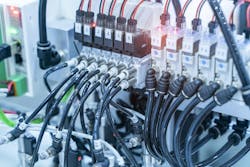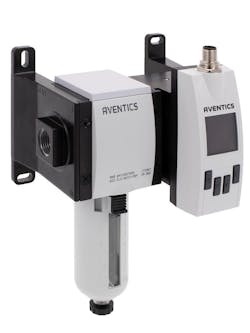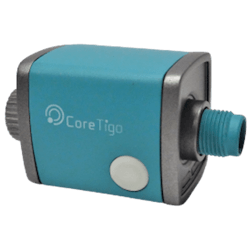Emerson Uses CoreTigo's Wireless Tech for Compressed Air Management
With compressed air leakages remaining one of the top sources of energy waste in industrial facilities, Emerson is now using CoreTigo’s wireless industrial automation technologies to reduce industrial machinery energy waste and CO2 emissions, while improving maintenance efficiencies and operational processes.
Emerson’s approach to this began with a project for a major food and beverage manufacturer and is now available for wide industry use. The project that started this began with use of Emerson’s Aventics high-end air flow and pressure regulation units at the food and beverage manufacturers. These units were retrofitted into wireless units with CoreTigo’s IO-Link Wireless products. IO-Link Wireless is a deterministic, low latency (5 msec) and low synchronization rates (10s of microseconds) scalable universal wireless communication protocol based on the IO-Link IEC 61131-9 standard and designed specifically for factory automation to coexist with other wired and wireless networks.
Now named the “Energy Saver,” these devices featuring Emerson and CoreTigo technologies provide a holistic approach to create “the most cost-efficient and simple way to enhance production lines with an advanced air treatment application,” according to CoreTigo.
Here's how the Energy Saver works: The Aventics AF2 air flow sensor and EV12 pressure regulator are each connected to CoreTigo’s IO-Link Wireless Bridge (TigoBridge) which converts the Aventics sensor and regulator into a wireless device with industrial-grade communication capabilities. The TigoBridges transmit wirelessly to CoreTigo’s IO-Link wireless gateway, while the Energy Saver device provides a constant stream of airflow from for analysis and monitoring.
In addition, this system controls the pressure regulation unit independently from the machine’s controller or the air compressor, allowing intelligent operation without machine downtime or PLC programming. Maintaining control over air pressure is essential for ensuring the machine remains in a stable and secure state during periods of inactivity, while also minimizing pressure to prevent unnecessary air waste.
Benefits of the Energy Saver include:
- Reduced CO2 emissions through minimized air leakages and optimized machine idle mode operation.
- Compliance with regulatory standards and a support of sustainability efforts.
- Prevention of prolonged non-optimal air flow.
- Minimization of unplanned downtime via the system’s independent control and reduced cable wear and tear thanks to its wireless setup.
- Simple deployment requires no modifications to the PLC setup or complex cabling layouts.



